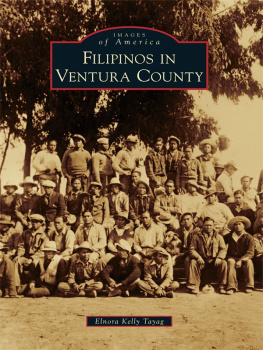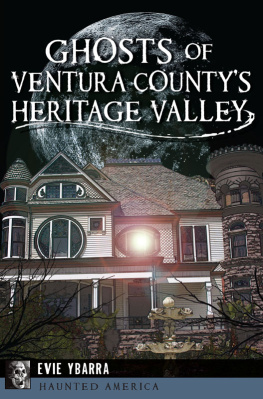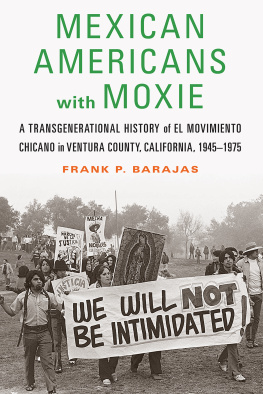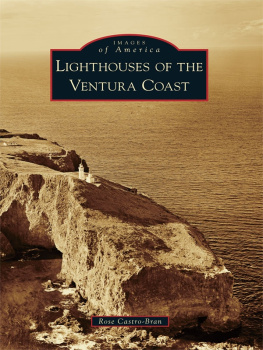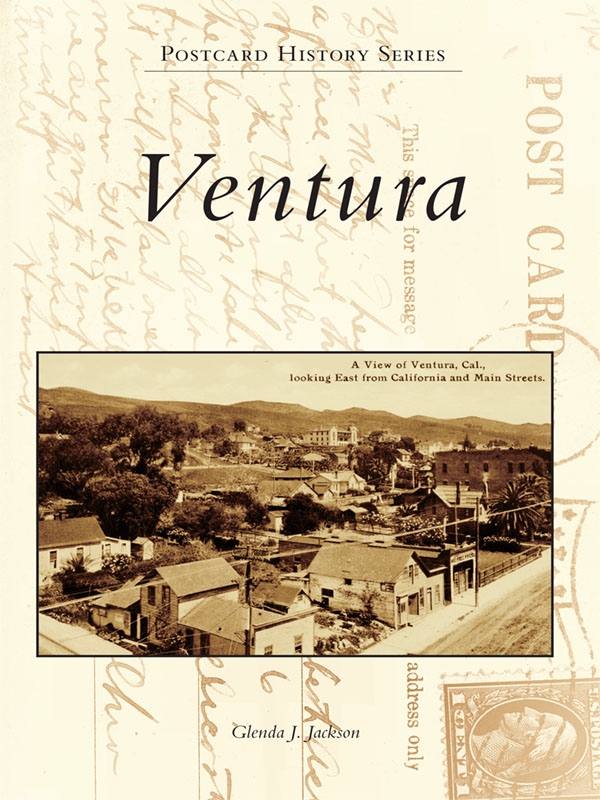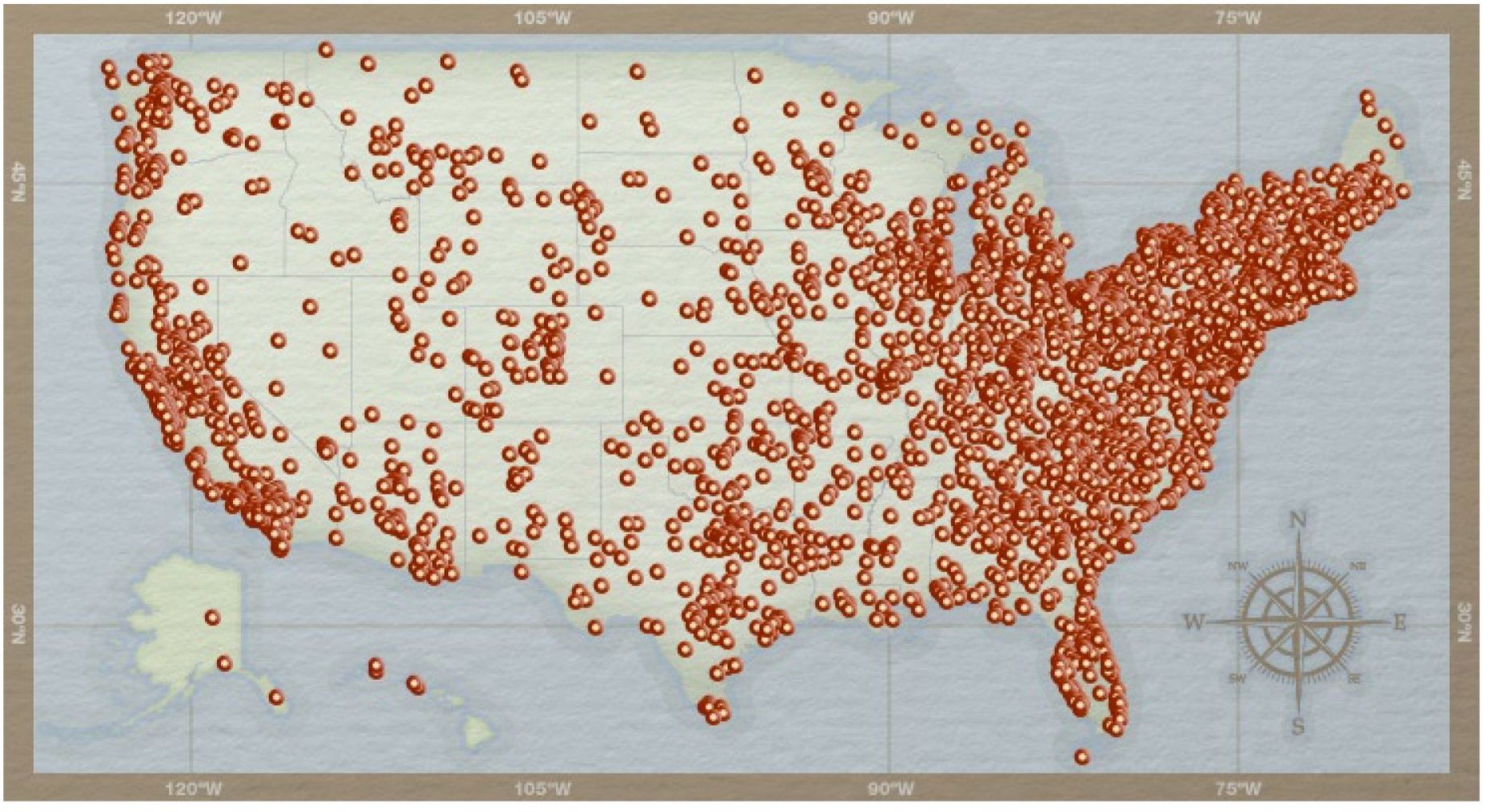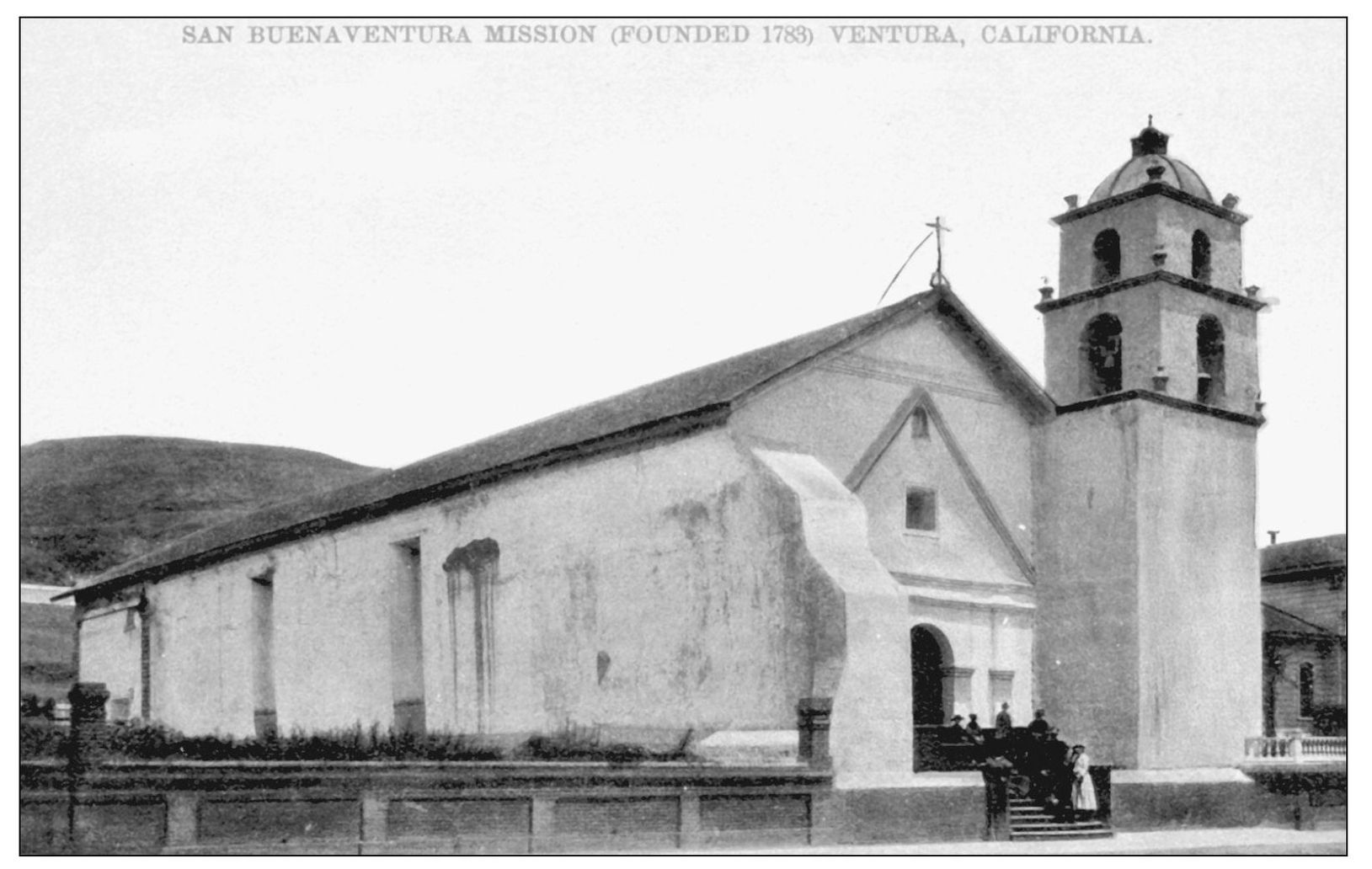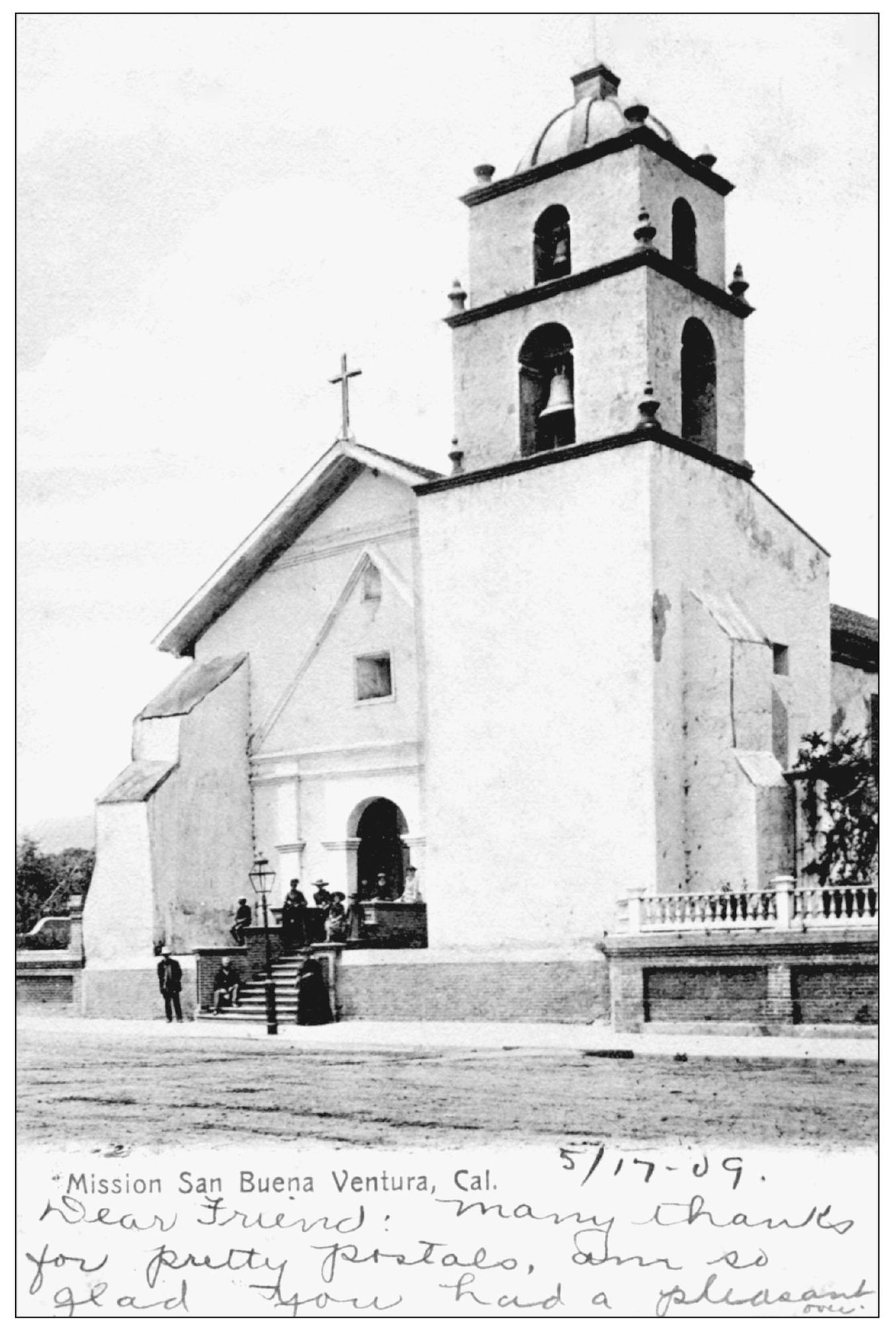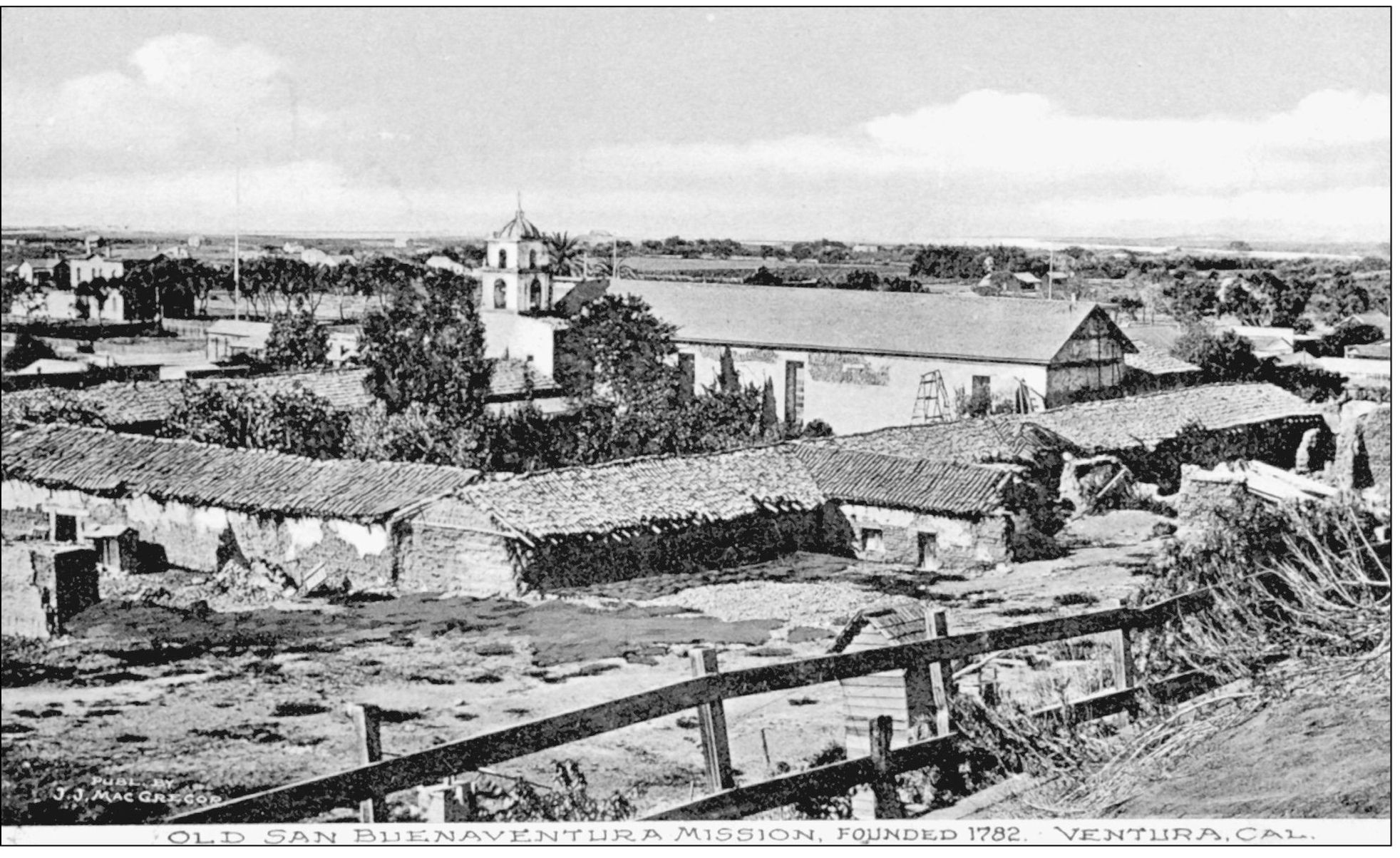I have many people to thank for helping me make this book a reality: Shawna Atchison, for trusting me with her cards for several months; John Burgman for giving me unlimited access to his card collection; Michel Colmache, manager of the El Patio Hotel, for giving me the postcard; Richard D. Dean for his encouragement and scans; UC Davis for the scans of Theodosia Burr Shepherd; Charles Johnson of the Ventura County Museum of History and Art, for always patiently answering my emails and taking my many phone calls; Suzanne Lawrence, who shared so many wonderful stories of Ventura and inspired me to become a storyteller; Jeff Maulhardt, for inviting me over, scanning the images for the cover, and for use of the early courthouse card; Dena Mercer, for sharing her familys wonderful photographs; Ken Prag, who has the most awesome cards Ive ever bought; San Buenaventura Heritage, Inc., for the image of the Dudley House; Richard Senate, who encouraged me in 1997 to do that first historical walking tour and for so openly sharing his history of Ventura with me; Cynthia Thompson of Authentic Resources Team, for her images and information on the Pierpont Inn; and to Julie Tumamait, a Chumash descendant, for her information and assistance.
BIBLIOGRAPHY
I have used many old newspapers and publications to compile information for this book. Some detail is very sketchy, and in researching, I found conflicting information depending on which version or decade I used. So, while I have tried to be as accurate as possible, the captions are only as accurate as my available sources. If there are factual errors, I welcome the correct information. My e-mail address is: venturahistorian@ aol.com .
Annual Report of the County Auditor, Ventura County, California. 19071908.
Caada Larga: History and Preservation of the Mission San Buenaventura Aqueduct. Ventura County Historical Quarterly . 1987.
Daily Free Press , 1908.
Ellis, Mark. Poor Mans Justice: Vicente Garcia and the Nineteenth Century California Justice System Ventura County Historical Quarterly . 1994.
The First 100 Years in Ventura . Souvenir centennial publication. 1966.
Historical walking tour brochure. City of Ventura, 1980s.
Historical walking tour guide. Ventura County Museum of History and Art.
Hobson, Edith and Myrtle Shepherd Francis. A Romantic History of San Buenaventura . 1912.
Johnson, John R. Venturas Chumash Community in the early 1880s. Ventura County Historical Quarterly. 1994.
Kurillo, Max and E. M. Tuttle. The Mission Bells that Never Ran . 1995.
Mission San Buenaventura, One Hundred and Seventh-Fifth Anniversary. 17821957.
Murphy, Arnold. A Comprehensive Story of Ventura County, California . 1979.
Public Library Service in Ventura: A Brief History. Ventura County Historical Quarterly. 1983.
Senate, Richard. Erle Stanley Gardners Ventura . Walking tour guide.
Sheridan, Sol. History of Ventura County. 1926.
Souvenir brochure, 1902. San Buenaventura Fire Department, reprinted 1980.
Standard Oil bulletins. 1929 and 1930.
The Story of Ventura County . Title Insurance and Trust Company, 1956.
Theodosia Burr Shepherd, Californias Pioneer Floriculturalist. Ventura County Historical Quarterly. 1963.
Ventura County, California. Sunset Magazine . 1909.
Ventura Democrat (illustrated edition) for St. Louis Worlds Fair. 1904.
Ventura Signal . 1872, 1875, 1876.
The Ventura Story . City of San Buenaventura, 1966.
Ventura Weekly . 1903.
Ventura Weekly Democrat . 1906.
Wheeler, Eugene D. and Robert E. Kallman. Shipwrecks, Smugglers and Maritime Mysteries . 1989.
Find more books like this at
www.imagesofamerica.com
Search for your hometown history, your old
stomping grounds, and even your favorite sports team.
One
I782
Mission San Buenaventura, named for St. Bonaventura, was originally to be the third mission in a series of 21 California missions. But by the time it was founded on March 31, 1782, it became the ninth. The current church on Main Street was completed in 1809 but damaged by an earthquake in 1812. Repair and renovations were completed in 1815 and included the large buttresses on the front of the building. The Arnaz family is pictured on the steps in the mid-1860s.
On November 24, 1713, Fray Junipero Serra was born as Miguel Jose in Petra on the Island of Majorca. He took the name Junipero upon his Franciscan confirmation. In 1749, he went to Mexico City, and in 1768, he accompanied Gaspar de Portola on an expedition into Upper California. In 1769, he founded Mission San Diego. While in Mexico, Father Serra injured his leg, and by the time he had walked to San Buenaventura, it had become ulcerated and he was in ill health. Arriving in San Buenaventura, a simple enramada of boughs and a small wooden cross was erected to celebrate mass. The exact location is unknown but is thought to have been near the ocean not from the San Miguel Chapel site on Thompson Boulevard. Father Serra stayed at the mission site for only three weeks before he headed to Santa Barbara. On August 28, 1784, he died at Mission San Carlos.
A large earthquake hit the coast near Santa Barbara on December 12, 1812, and severely damaged the new mission. It also created a 50-foot-tall tidal wave that reached halfway up present-day California Street. Aftershocks rocked the area for months, and the padres and Chumash Indians abandoned the mission and set up temporary quarters near Casitas Pass (Highway 33 and Caada Larga Road), close to the Canet Ranch. The Santa Gertrudis Chapel was established here between 1804 and 1808, with small houses built for the neophyteshence the name Casitas, or small houses in Spanish. Mass was held there for several months until the aftershocks and fear of tidal waves subsided. The site of the Santa Gertrudis Chapel lies beneath Highway 33. (Courtesy John Burgman.)
This 1880s image shows one of the three quadrangles that enclosed the gardens and fountains at the San Buenaventura Mission. In the foreground, barely visible beyond the fence, are the wine and olive presses. Records from 1825 show the mission having 37,000 head of cattle, 600 head of horses, 200 yoke of working oxen, 500 mules, 30,000 sheep, and 200 goats. The orchard produced pears, apples, peaches, figs, apricots, nectarines, and dates. English walnut trees also stood in the orchard, and some of the first oranges in California were grown here. Grapes were plentiful and sweet and were made into wine or dried as a kind of raisin. The mission grounds extended from Main Street south to Meta Street (Thompson Boulevard) and from Ventura Avenue to just west of Palm Street.



